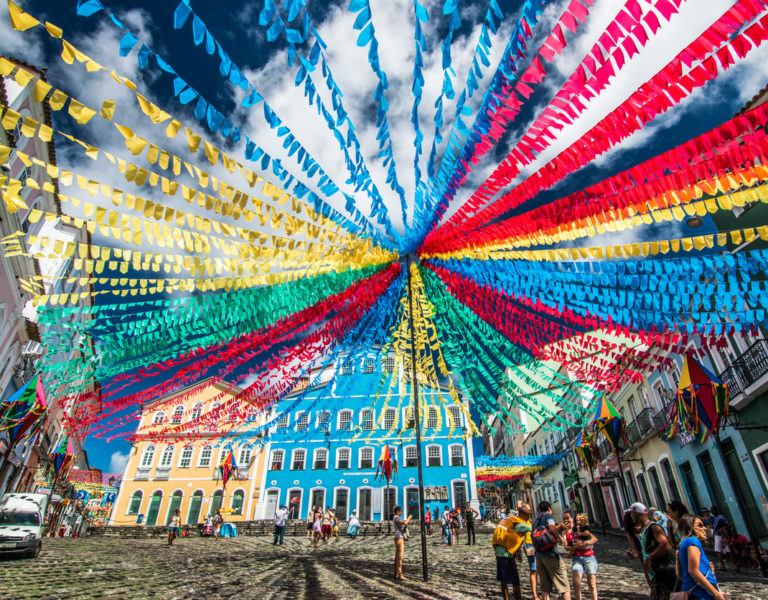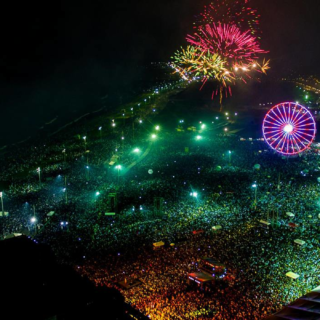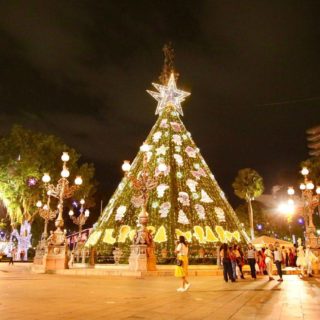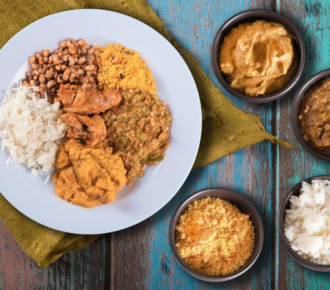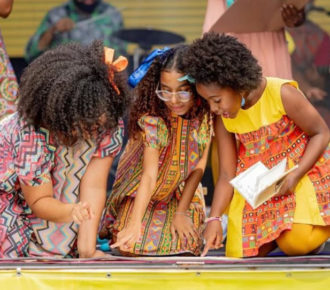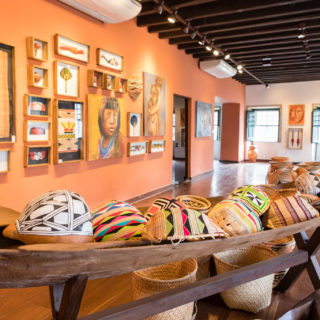
Curiosities, tradition and syncretism of “Festas Juninas” (June Festivities)
We blink and we are already in June, mid-year, the month of winter solstice in the southern hemisphere, the day with fewest hours of sunshine, beginning of winter. The Church dedicates the month in devotion to the Sacred Heart of Jesus and the Holy Apostles. This is also the month in which the Stonewall rebellion in 1969 happened, kicking off the important LGBTQIA+ pride day, when the community celebrates #Pride in many different ways.
The sixth month of the year is nationally known as the month of Festas Juninas. But especially in the northeast, June is like a second carnival. Festivities, beliefs, habits and traditions of Brazilian popular culture are celebrated in a unique way, and there are people who spend the year waiting for this month. The parties are considered the main events in cities in the interior of Bahia, but unfortunately, they will not be held for the second consecutive year, due to the Covid-19 pandemic. We know it was the best decision. But there’s no doubt we miss it a lot.
“Ai que saudades que eu sinto. Das noites de São João. Das noites tão brasileiras nas fogueiras” / (Oh how much I miss the nights of São João. The so Brazilian nights in the bonfires) (Excerpt from the song Noites Brasileiras by Luiz Gonzaga)
And it is to the sound of the song “Noites Brasileiras”, by Luiz Gonzaga, that we invite you to come with us in this text about June traditions, that longing-willingness, memories of parties experienced since childhood, which have built this universe of belonging around everything that these traditions represent.
Tradition and syncretism
As it is one of the most popular festivities in Brazil, it is common for everyone to have some memory of this festivity: music, food, colorful flags, games, dancing, forró and fireworks.
The June festival has its origins in the ancient pagan celebrations of peoples from Asia and Europe. It did not have the religious character that it assumed years later and that continues to this day. It was brought to Brazil by the Portuguese and adapted to our culture, which started to celebrate Santo Antônio (06/13), São João (06/24) and São Pedro (06/29).
According to professor Márcia Fernandes, in her text on the “Toda Matéria” portal, even before the Middle Ages, in the northern hemisphere, people celebrated the arrival of summer – in the month of June – honoring the gods of nature and fertility, at the same time that they asked for a plentiful harvest, mainly of cereals, such as corn – which is now the most common ingredient in typical June festival foods. The bonfire, a characteristic symbol of the June festivities today, also has its origins in the pagan festival, because it was customary to make bonfires during celebrations.
For Prof. Dr. Wander de Lara Proença – Doctor in History and professor at the South American Theological Faculty, in Brazil, June festivities also developed a lot among rural populations, establishing a syncretism between Christian tradition, indigenous beliefs and customs and African-based cults . (https://ftsa.edu.br/home/index.php/artigo/520-festa-junina-origens-historicas-e-culturais ). Thus, Catholic missionaries, in the colonial period, used the June festivities as a strategy for converting the indigenous to their faith.
The professor Gildeci Leite, associated with the Geographical and Historical Institute of Bahia (IGHB), says that there are syncretic and parallel relationships between Xangô and the Catholic saints, more specifically those celebrated during the June period. Among these relationships are the specificities of fire representations and their meanings for Xangô, São João and São Pedro. According to him, the people of axé celebrate Xangô and the June saints, sometimes separately, sometimes in an integrated way, always preserving fire symbologies.
The culture of the Brazilian Northeast has developed its own habits in relation to the world and its cultural manifestations. These habits were passed down from generation to generation.
Food and Drinks
Corn is a very important food in these celebrations. Several typical foods from the June festival take this ingredient. The main typical dishes of the June festival are: popcorn, paçoca, canjica, boiled peanuts, carimã cake, munguzá, corn and carimã porridge, pamonha, curau, corn cake, rice pudding, pine nuts, couscous and tapioca.
On June 13, the churches distribute the “Pãozinho de Santo Antônio”, which must be eaten by people who want to get married. The most traditional in Salvador is the Church of Santo Antônio, in one of the most beloved neighborhoods of the city and which bears the name of the saint: Santo Antônio Além do Carmo. Outside the pandemic, the “trezena de Santo Antônio” (a period of thirteen days of prayers before Santo Antônio’s day) is a tradition, when residents decorate their homes for the celebration.
In other states, the drinks are mulled wine and “quentão”. In Bahia, the most traditional is the liqueur, and the jenipapo flavor is the favorite. One of the most popular liqueurs in Salvador is the one produced by the nuns of the Desterro Convent. Franciscan Sisters of the Sacred Heart of Jesus producing the main drink of the party: things you only see in Bahia!
The dances
In the Northeast, in addition to a lot of forró, the São João Festival brings groups and competitions, the most famous being in Salvador, Bahia; in Caruaru, Pernambuco; and the largest in the world in Campina Grande, Paraíba. Called “Quadrilhas Juninas”, they have luxurious costumes and elaborate sets. In Salvador, every year, several teams liven up the Praça da República, in the Periperi neighborhood, in the railway suburb.
Here, the Quadrilha Junina came from the ghettos, Cidade Baixa, Alto do Peru, Fazenda Grande, among others. One of the most traditional, Asa Branca, which in 2022 completes 30 years of history, has 69 titles and is the first quadrilha from Bahia to be champion in the Brazilian Championship of the Brazilian Quadrilha Federation (in 2012). Besides this one, other groups are also present at the party, such as Cia da Ilha, Imperatriz do Forró, Balão Junino, Forró do ABC, Pé no Chão, Capelinha do Forró, Chiado do Chinelo and Flor de Laranjeiras, in addition to the special participation of the junior quadrilhas Germe da Era and Forró do Luar.
Online parties – make your party at home
Because of the pandemic, without the in-person parties, the artists are investing in live broadcasts. You can find all the programming in this link.
By Fernanda Slama
Portal Content Coordinator

